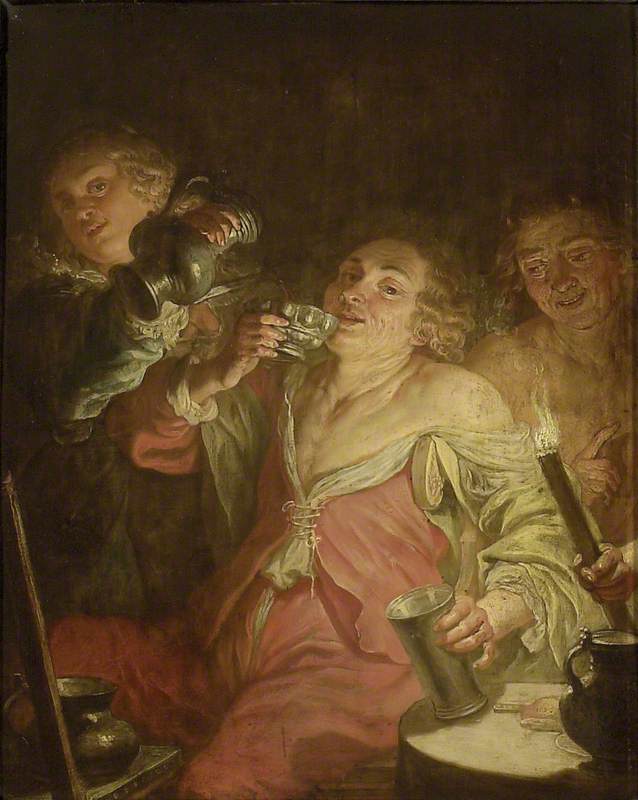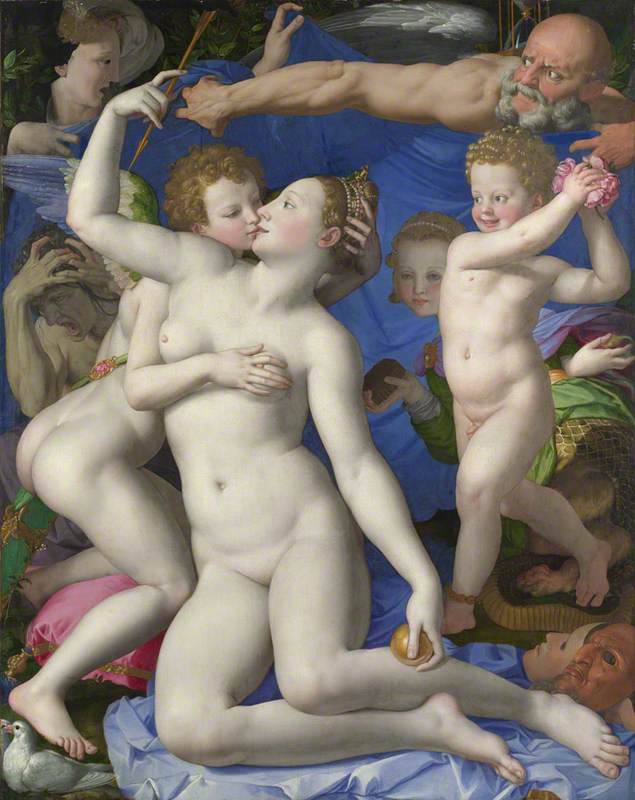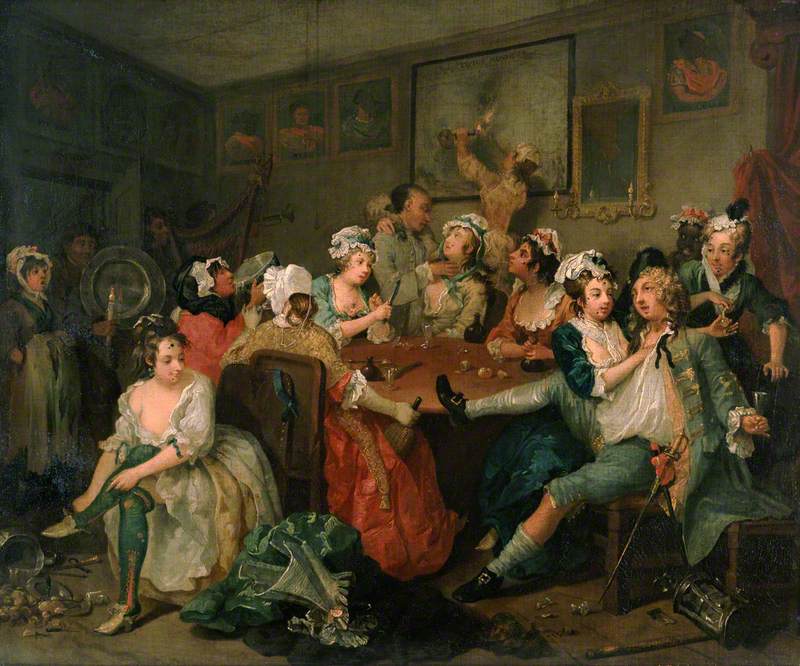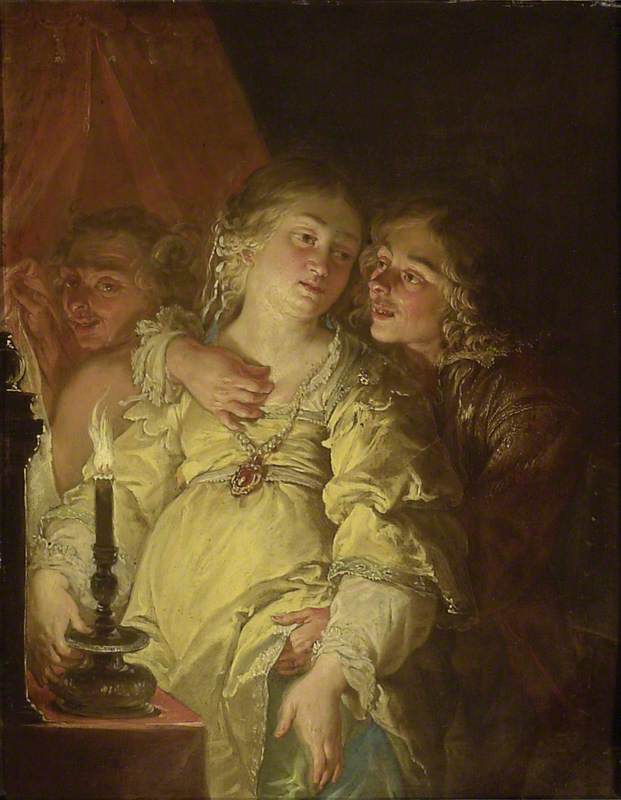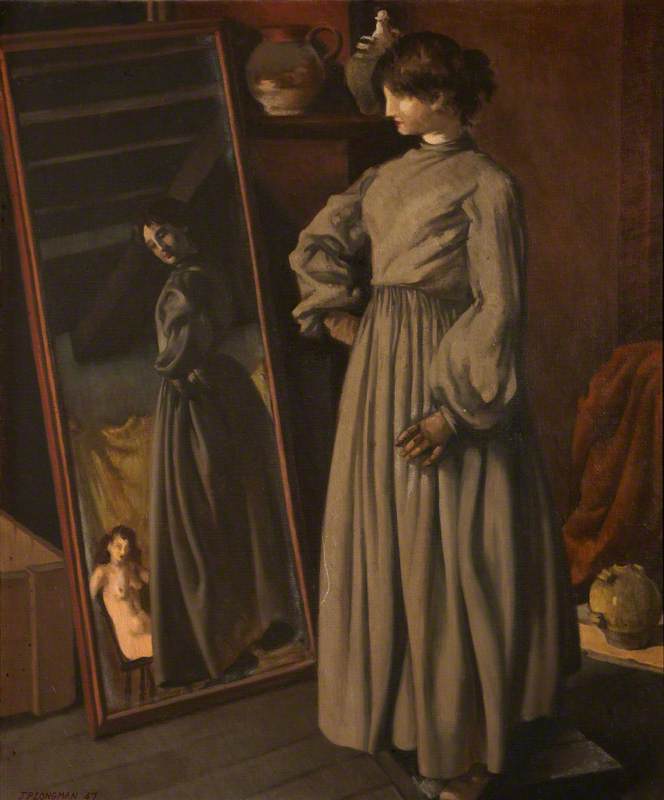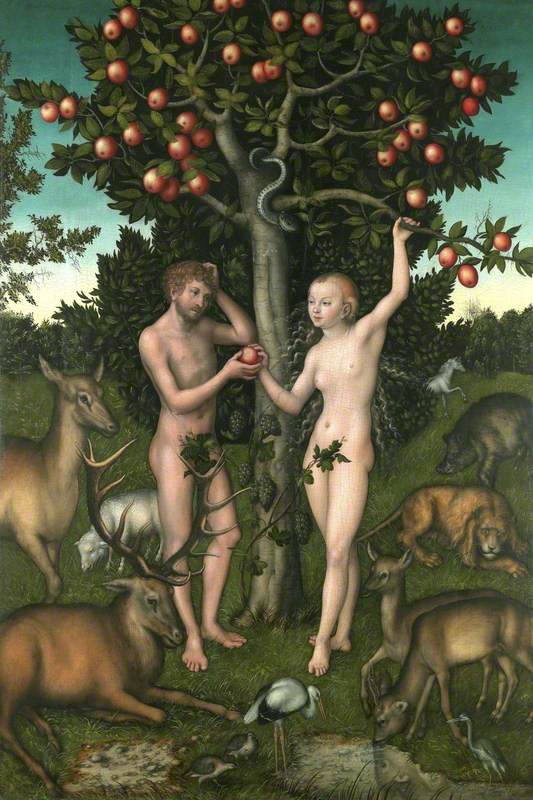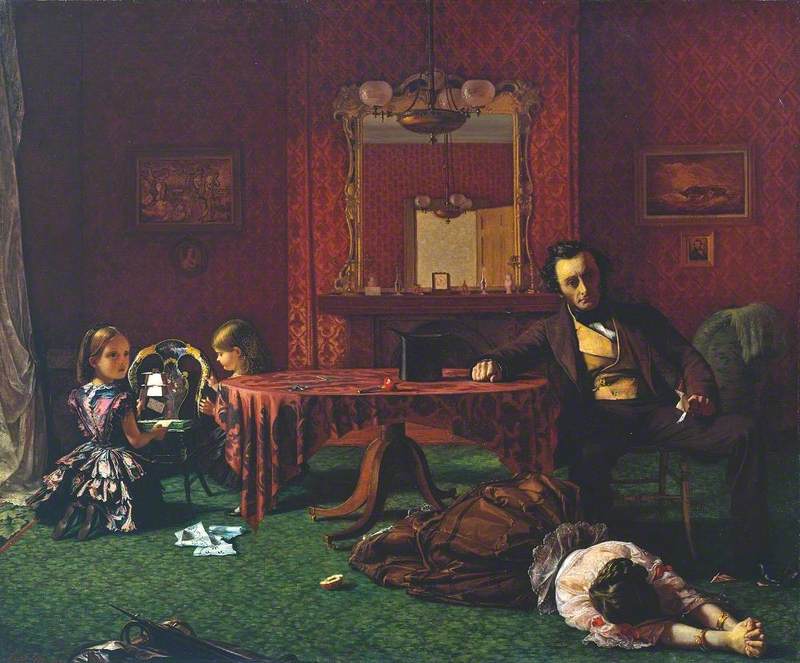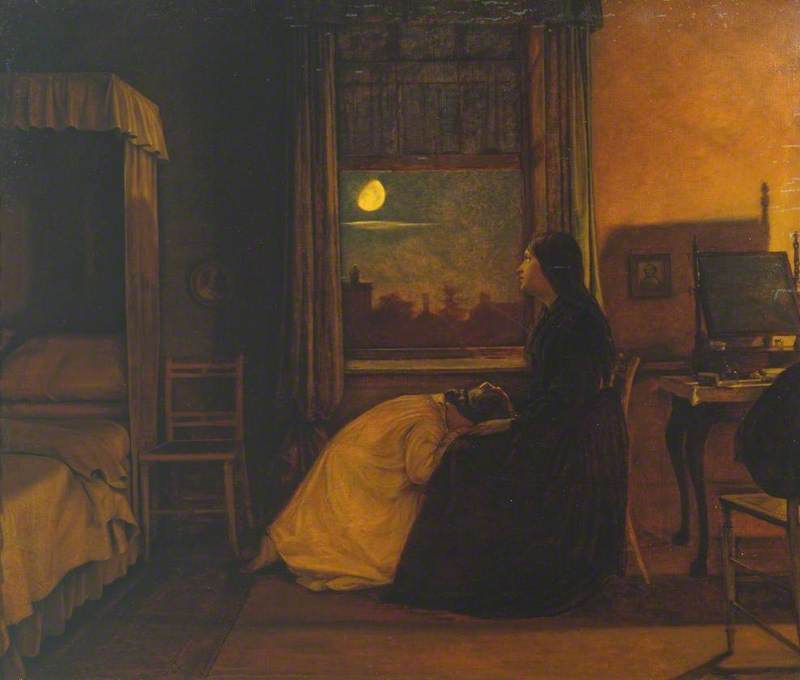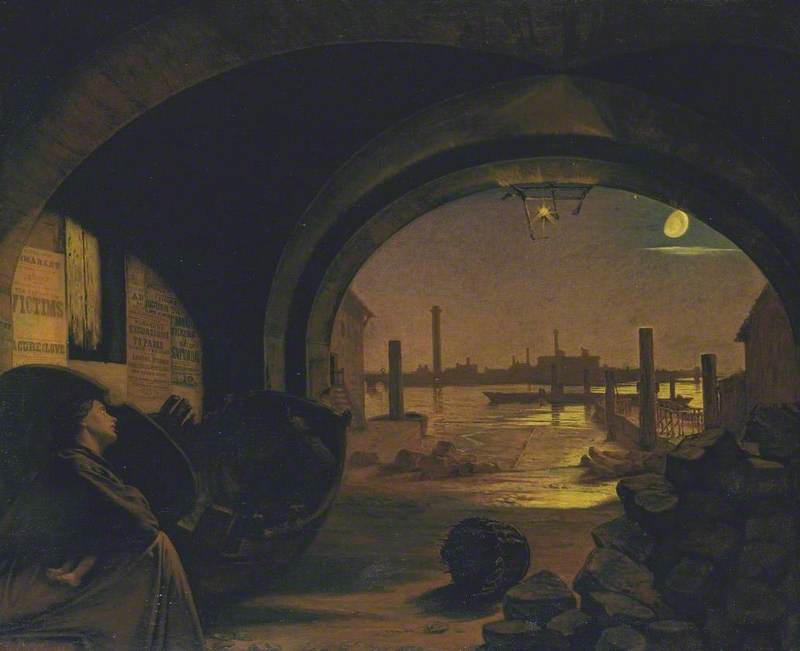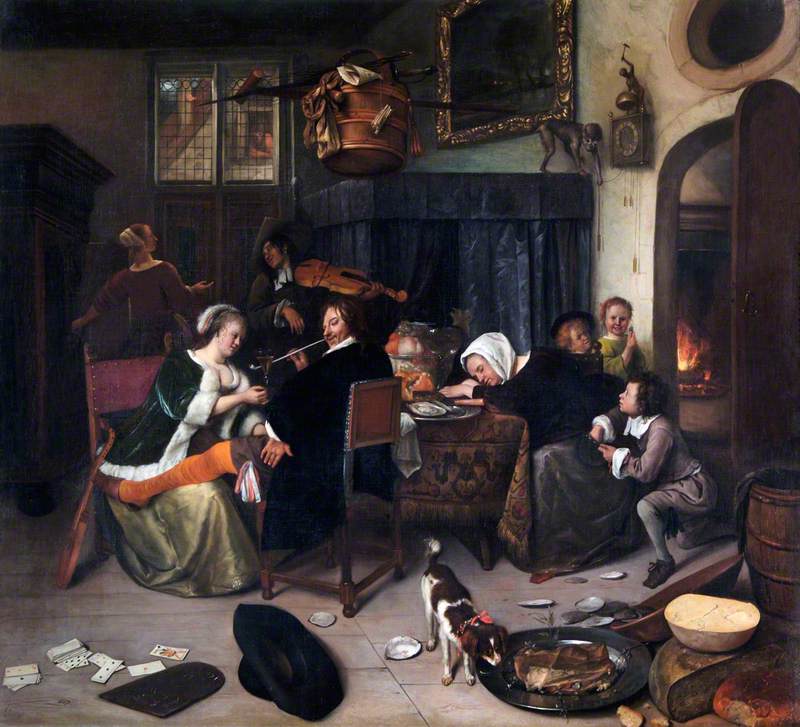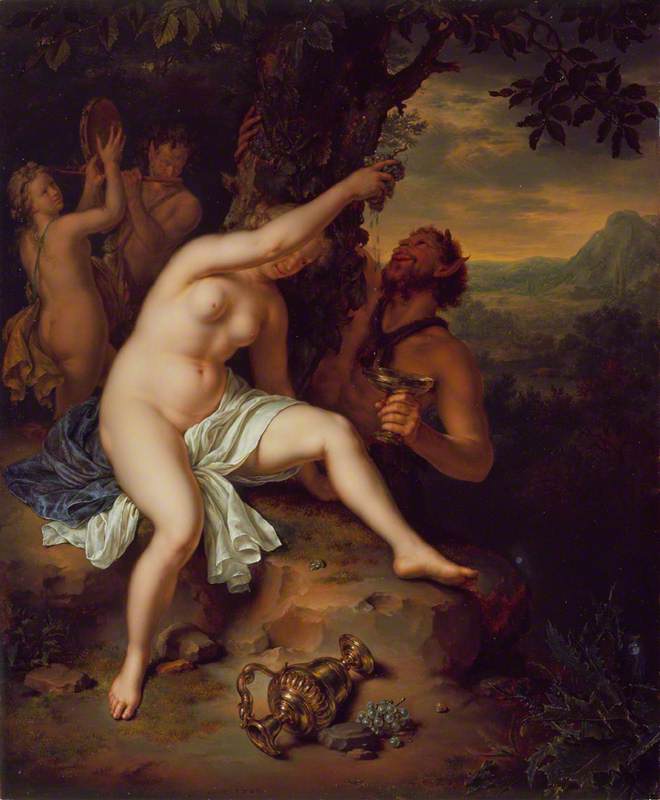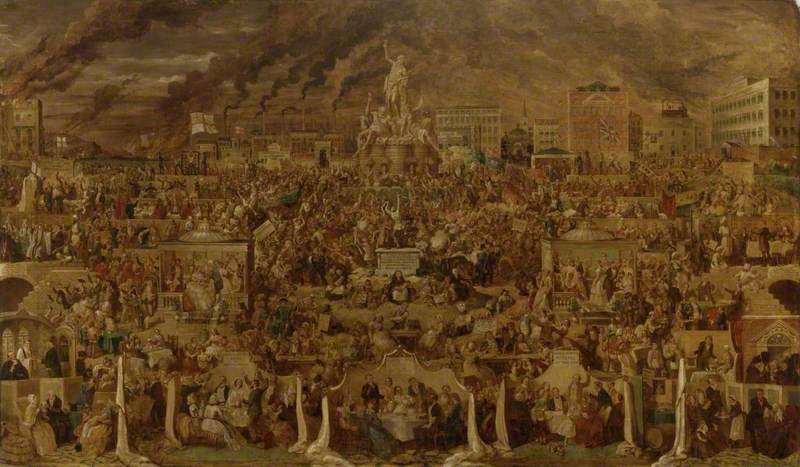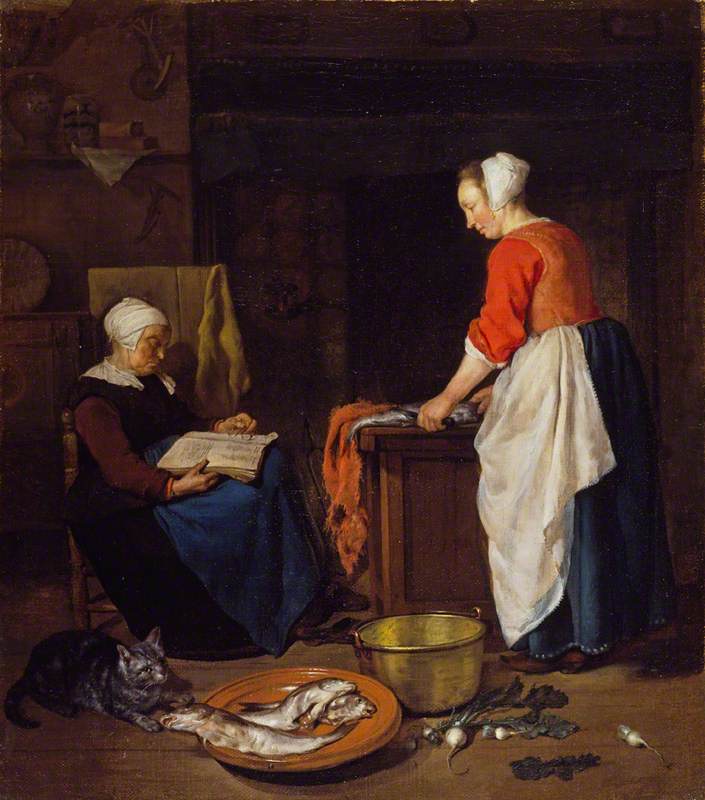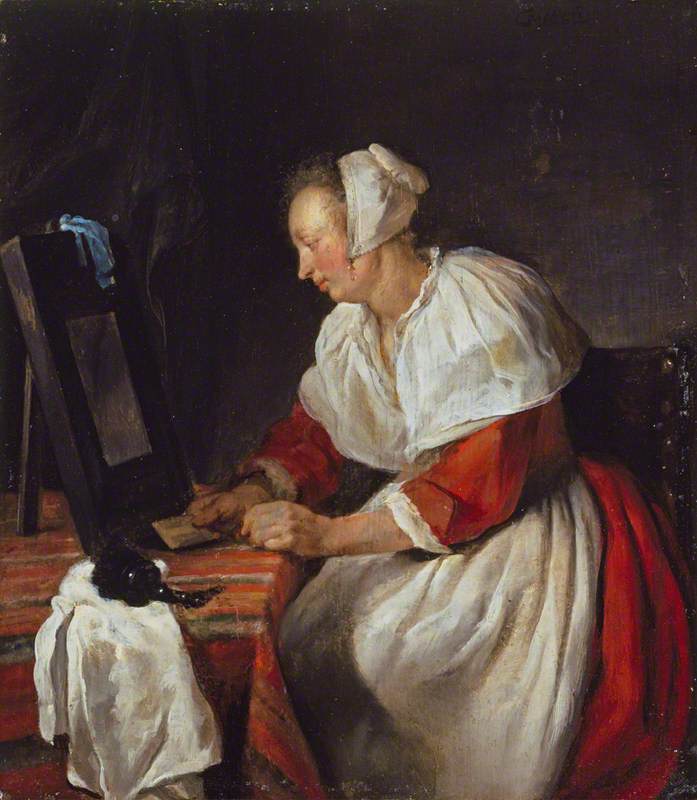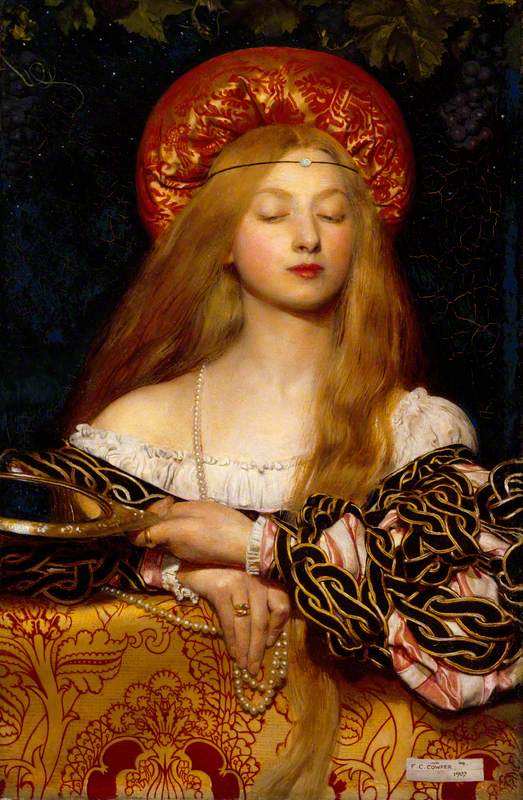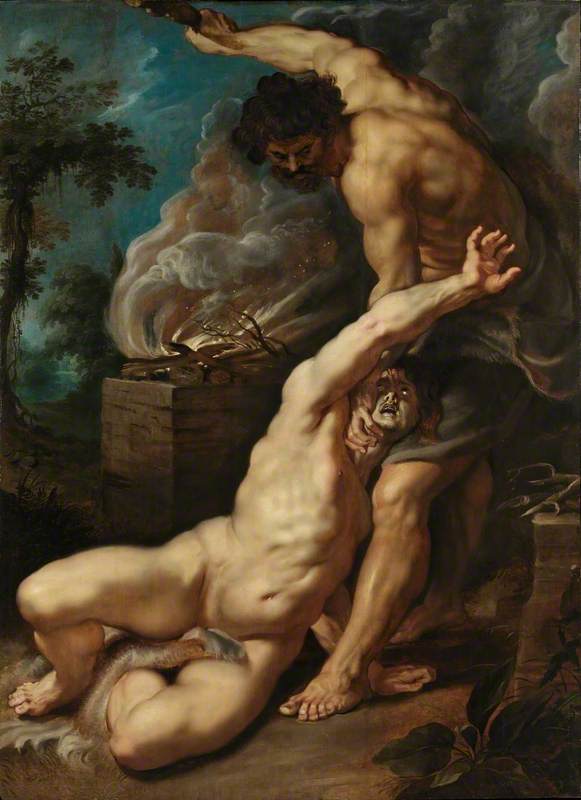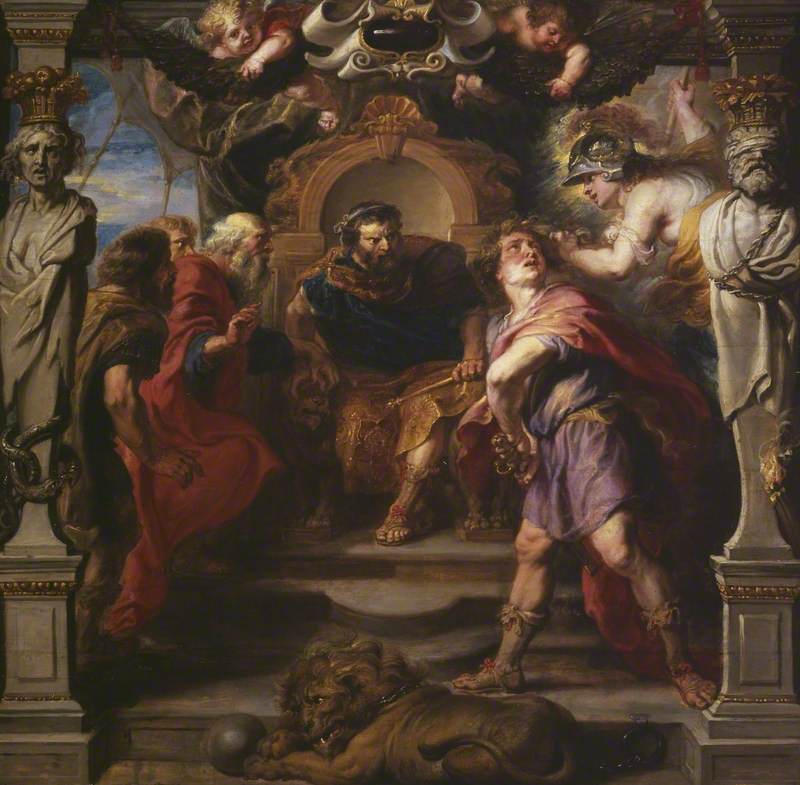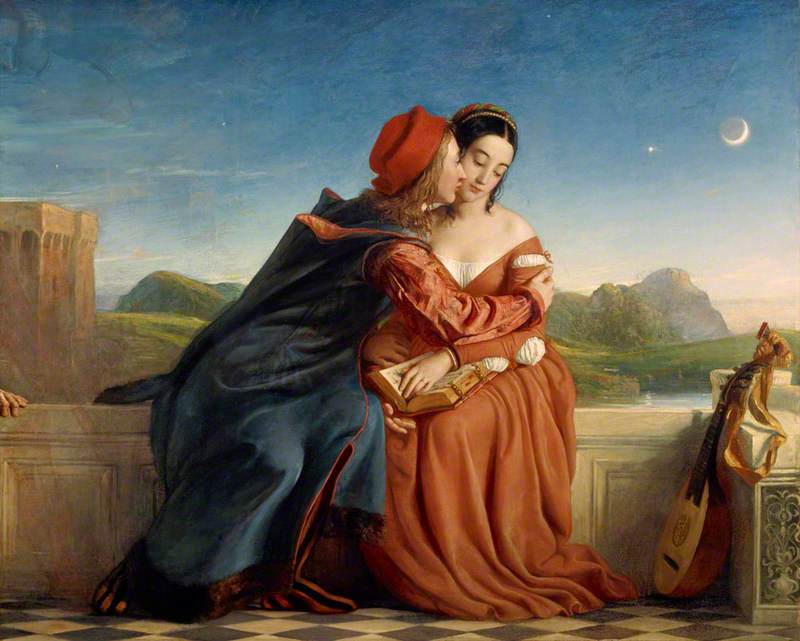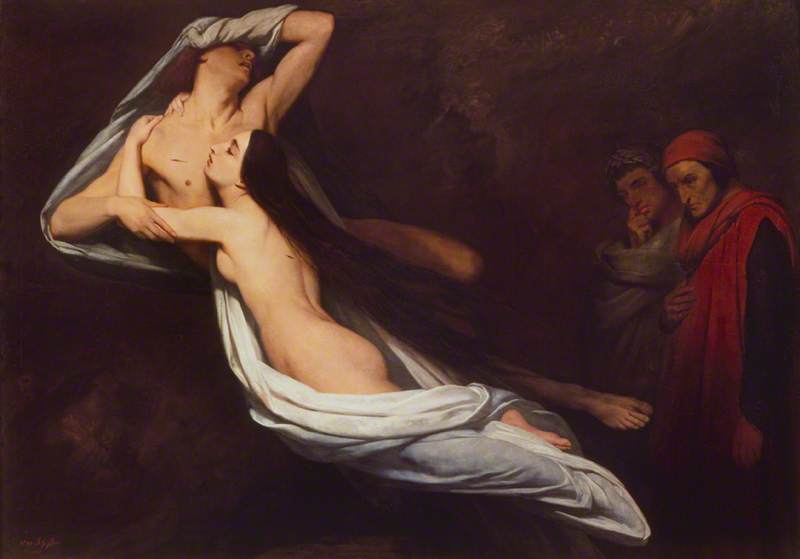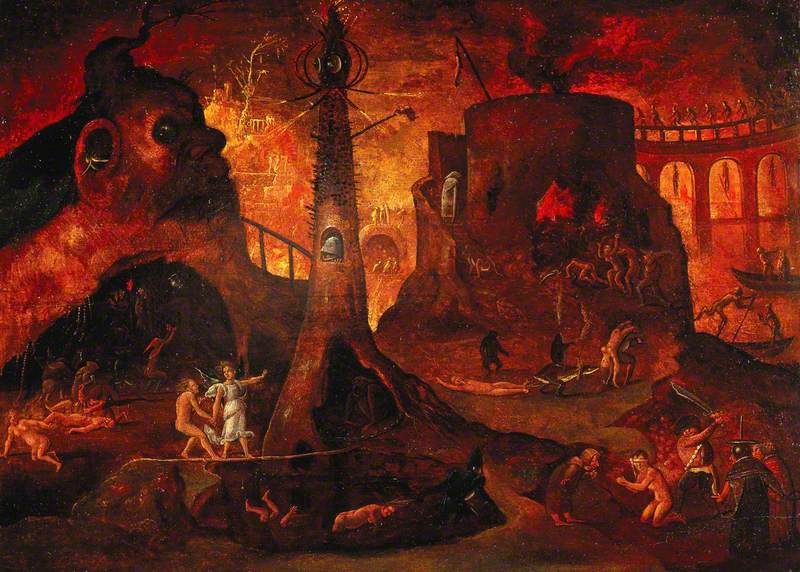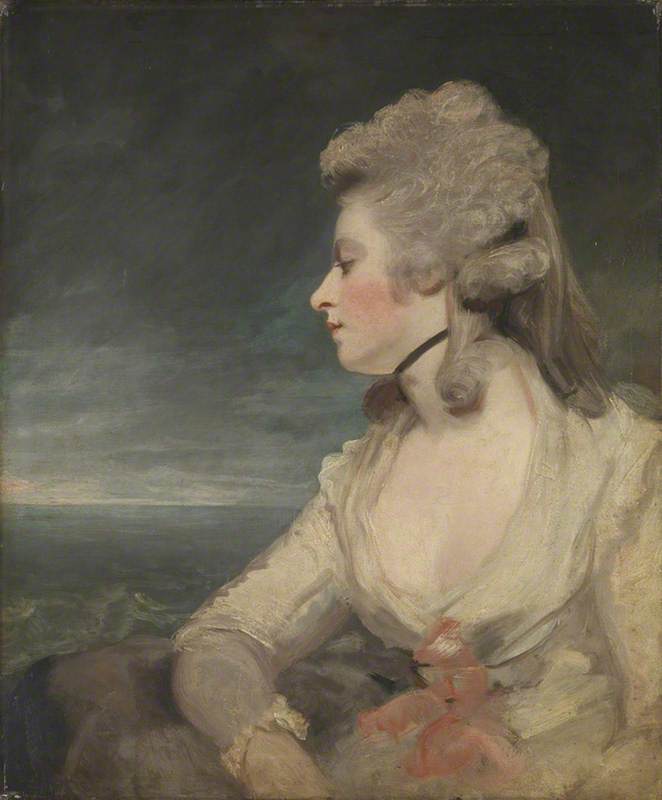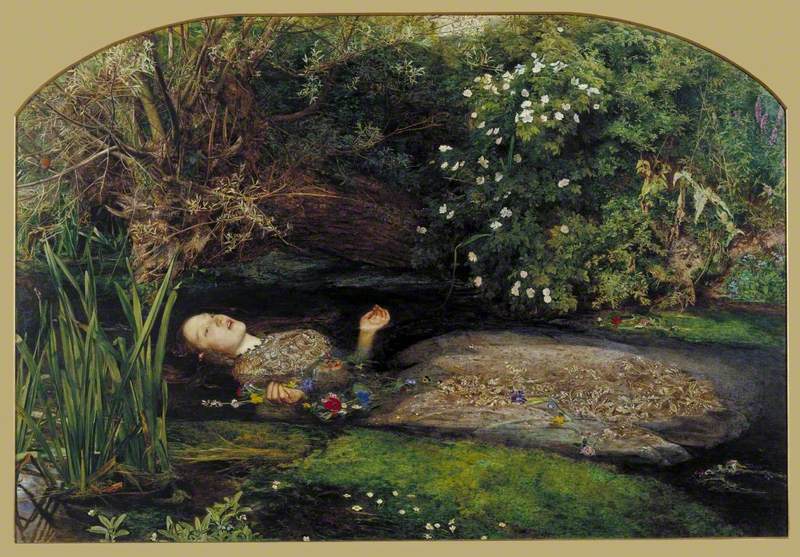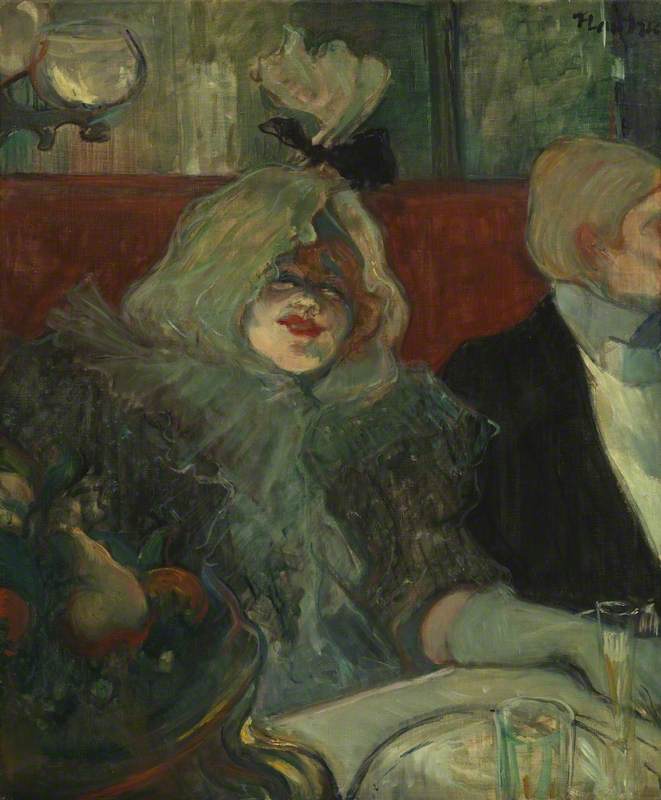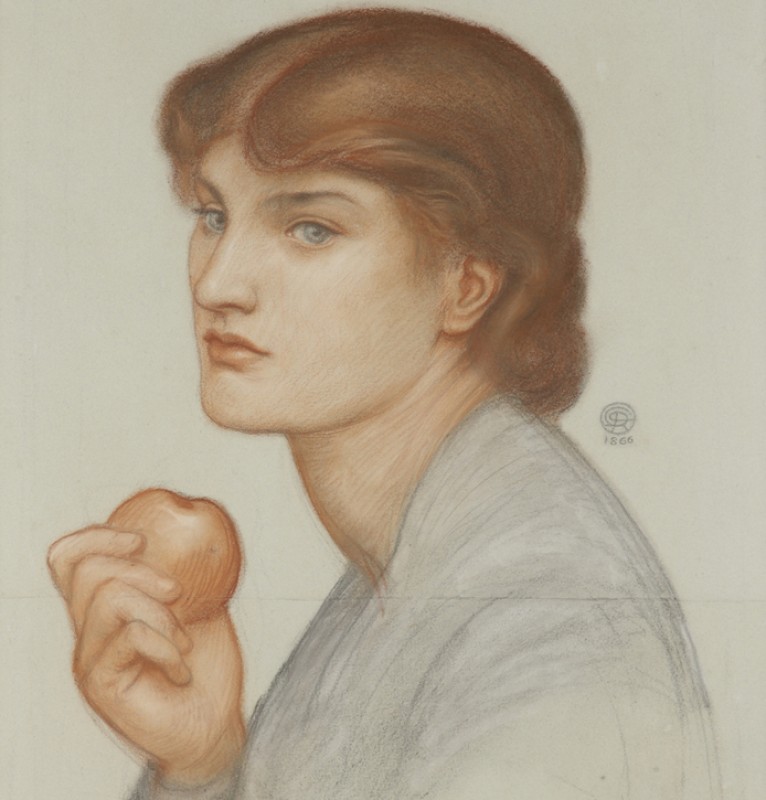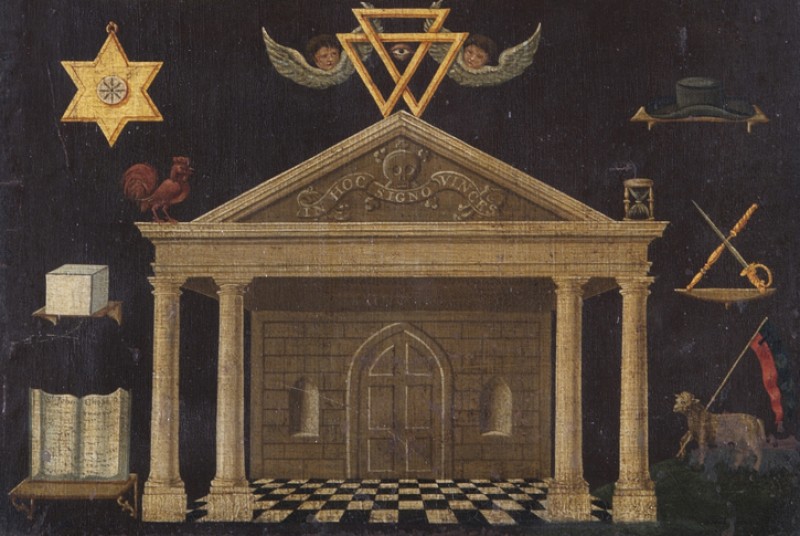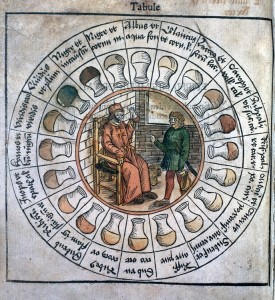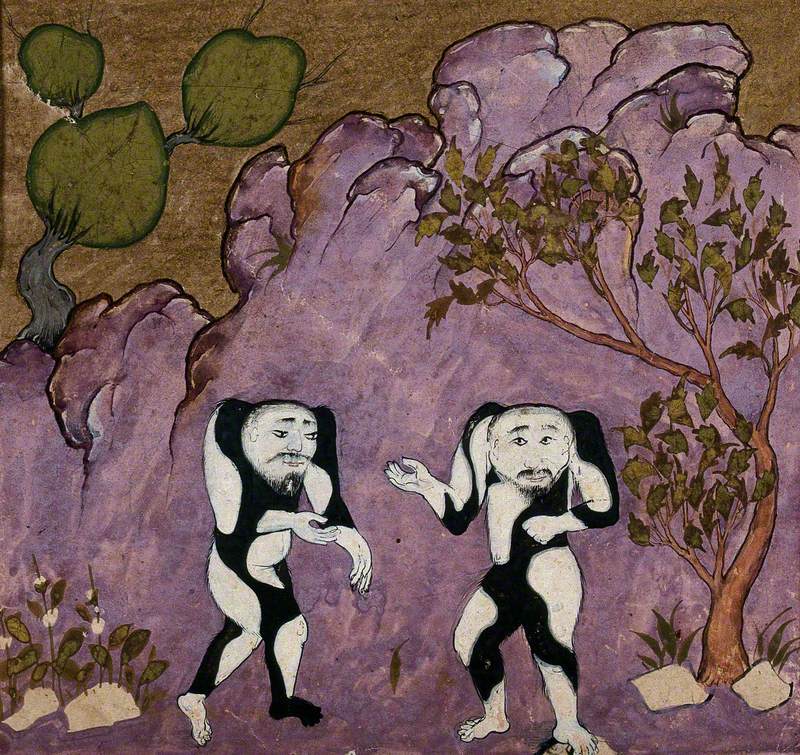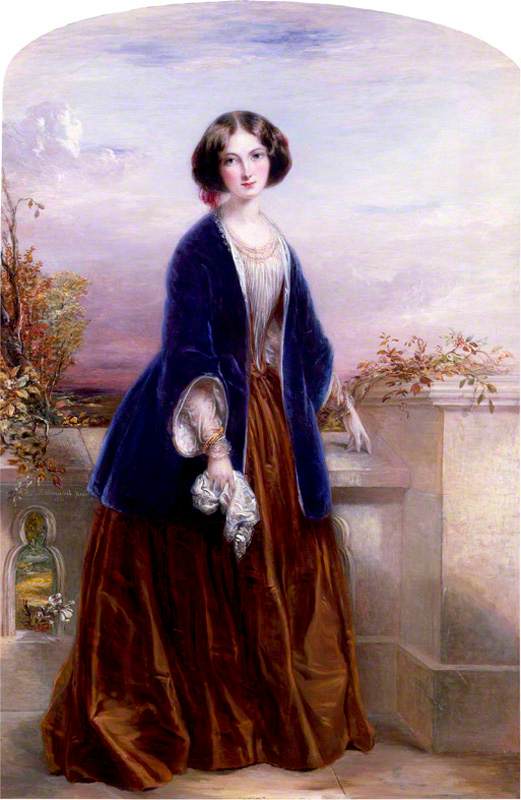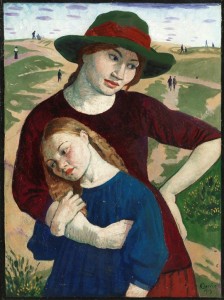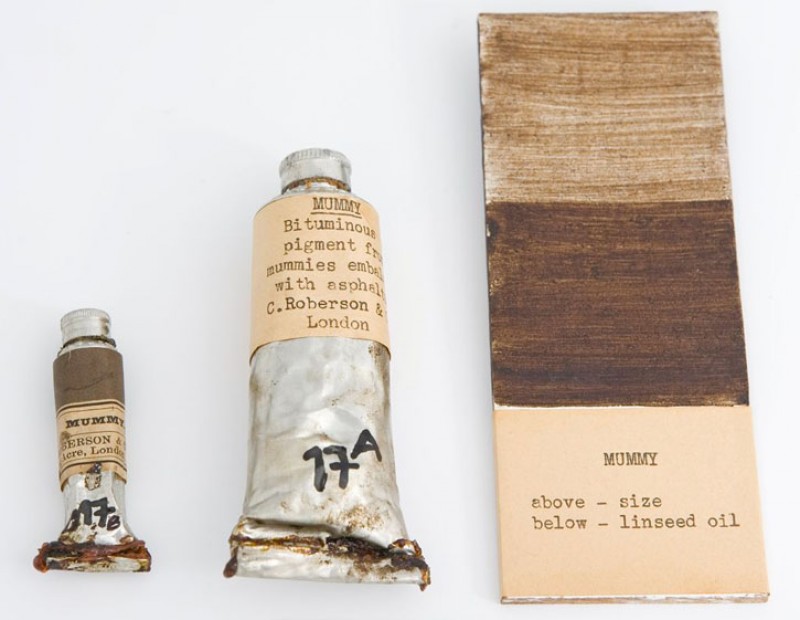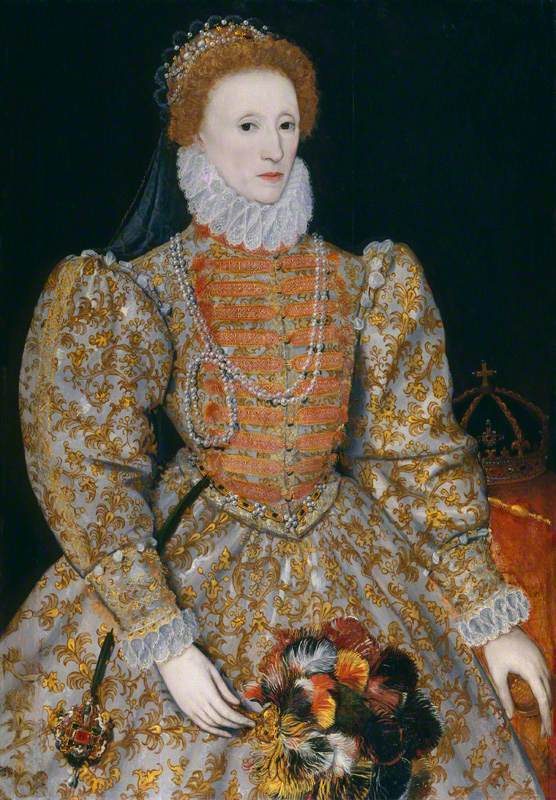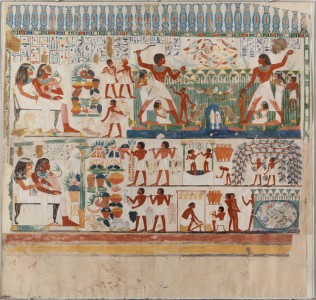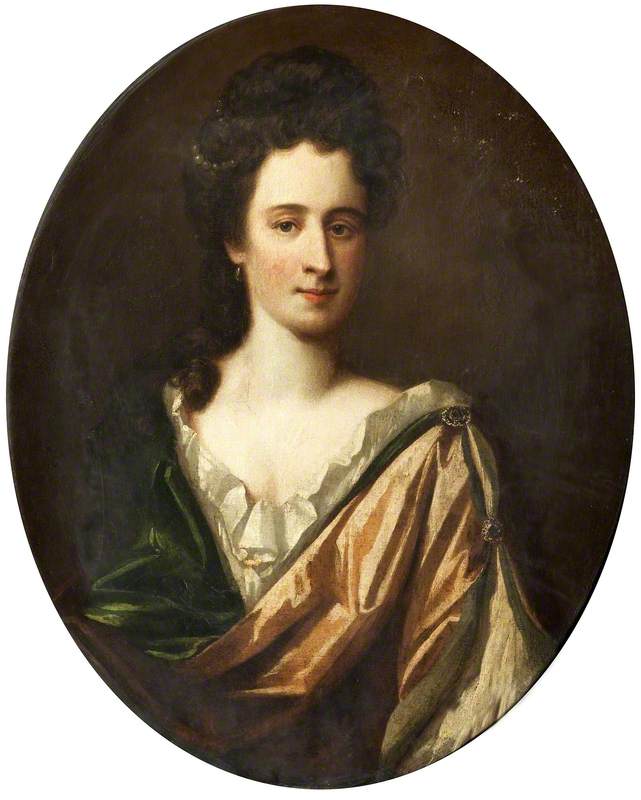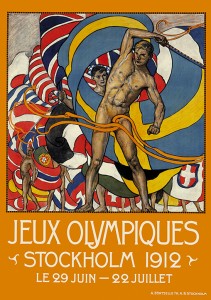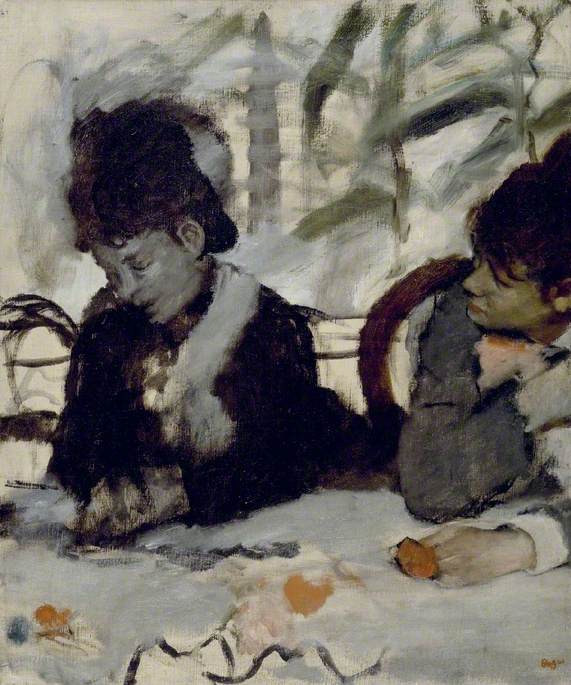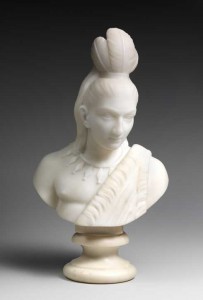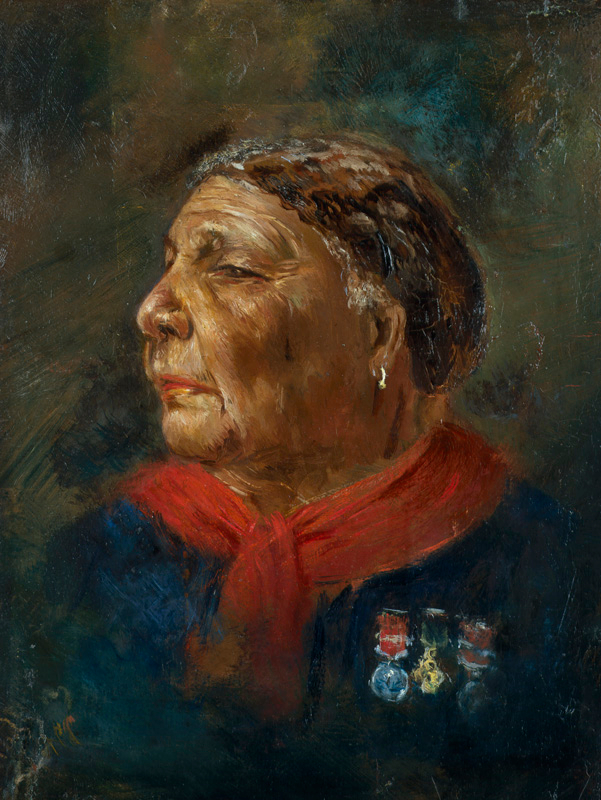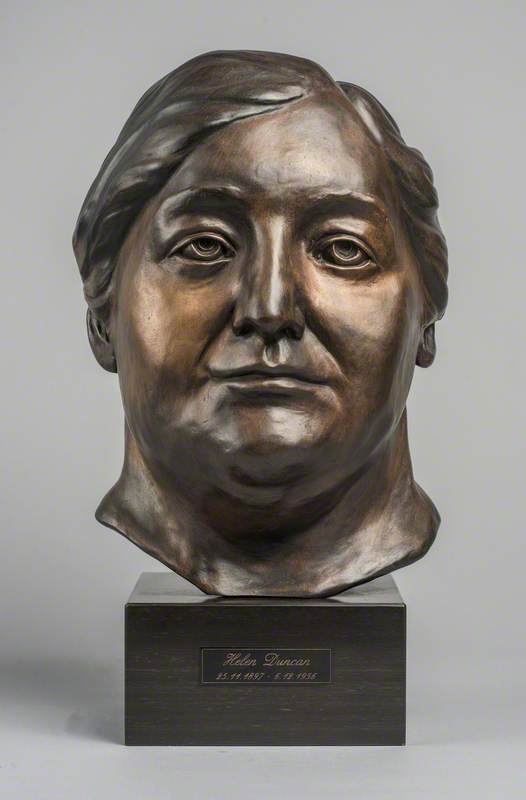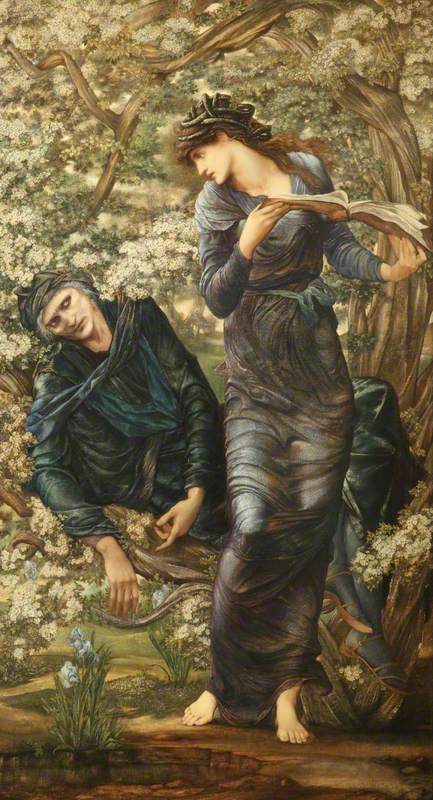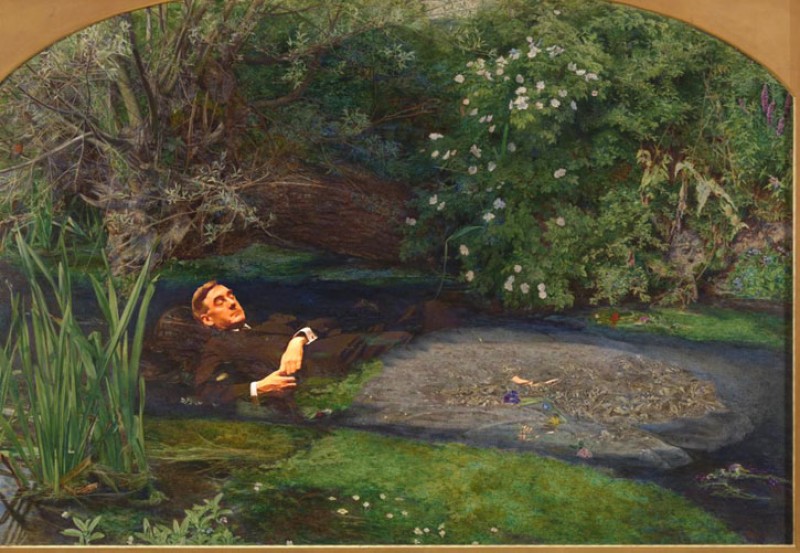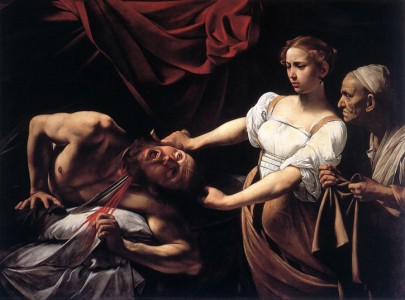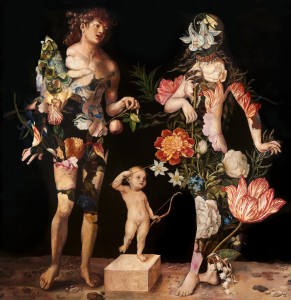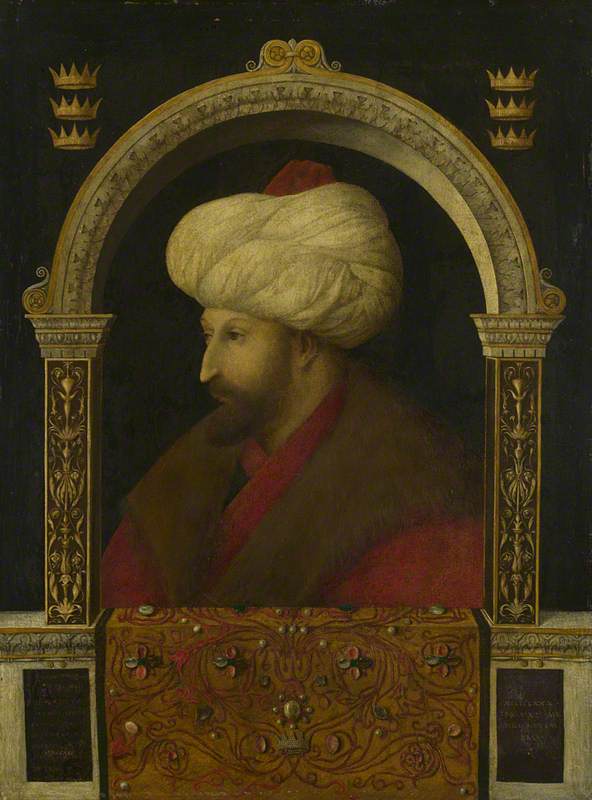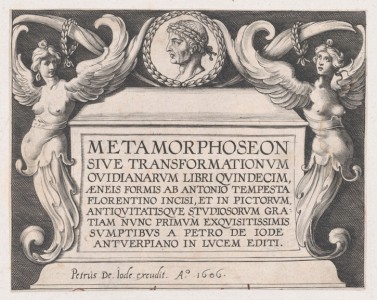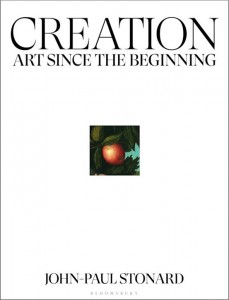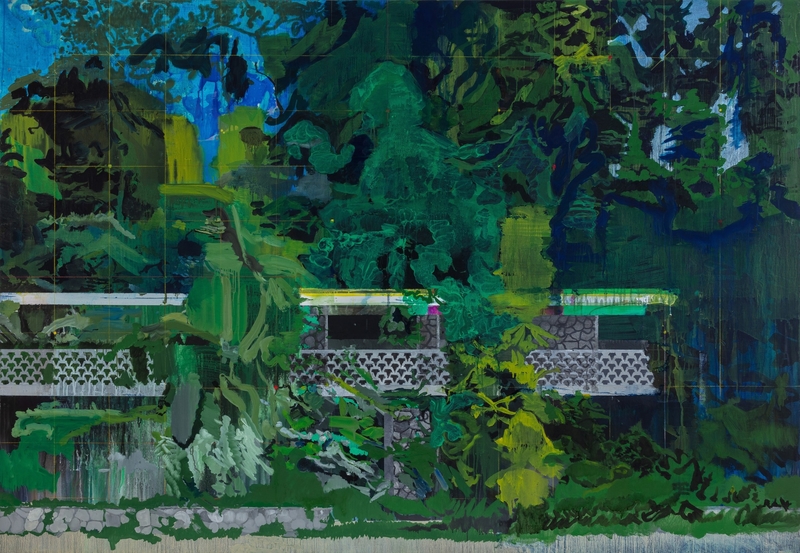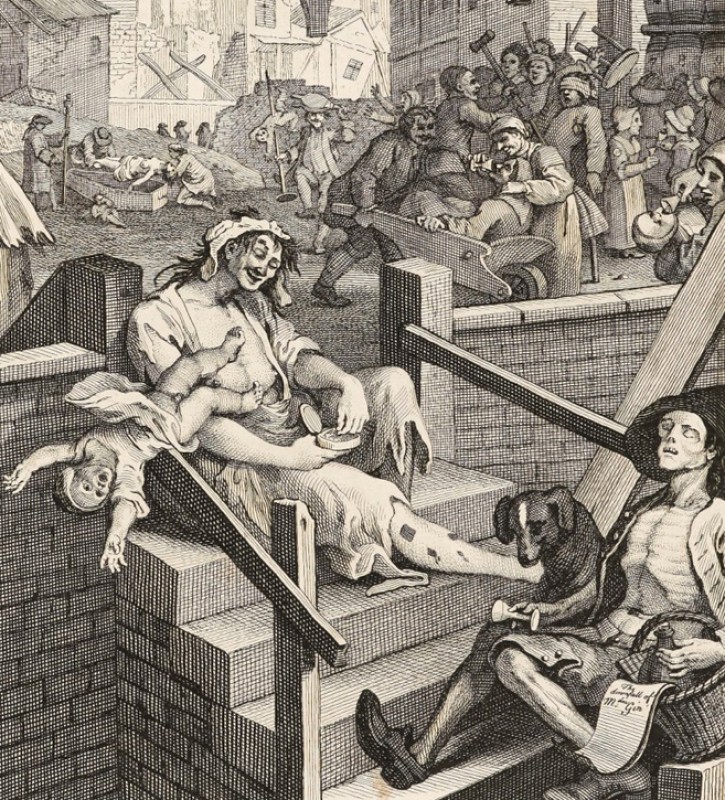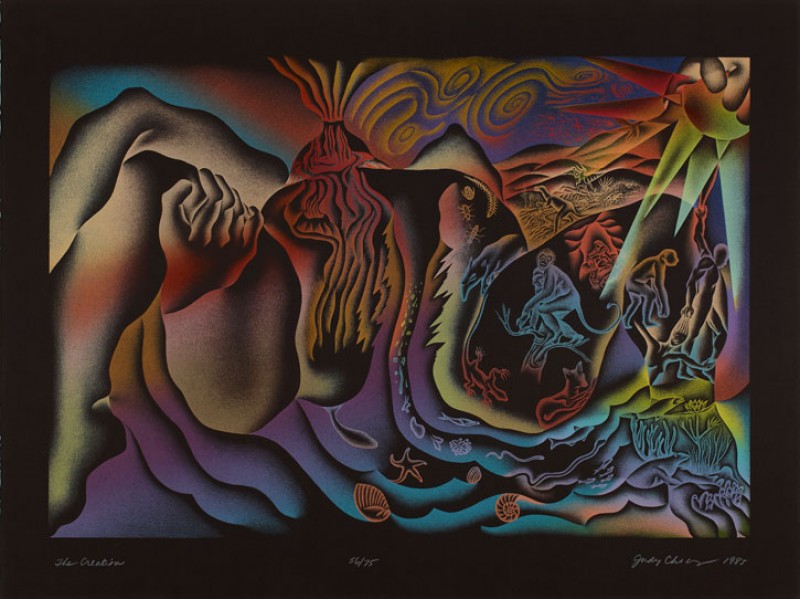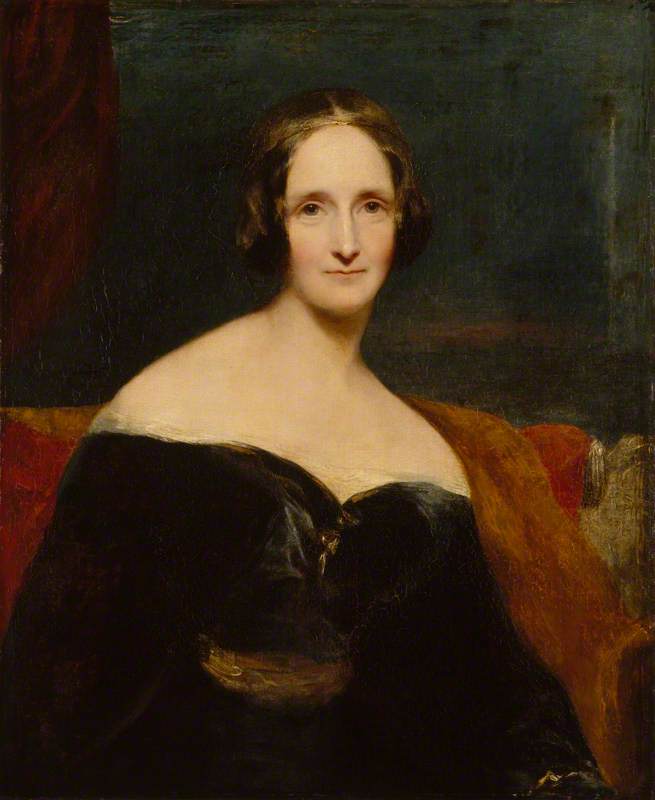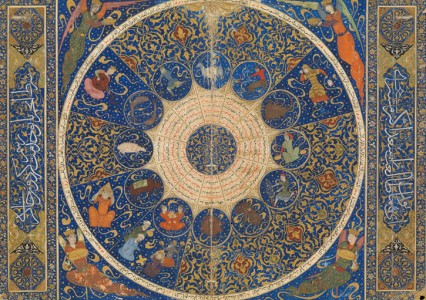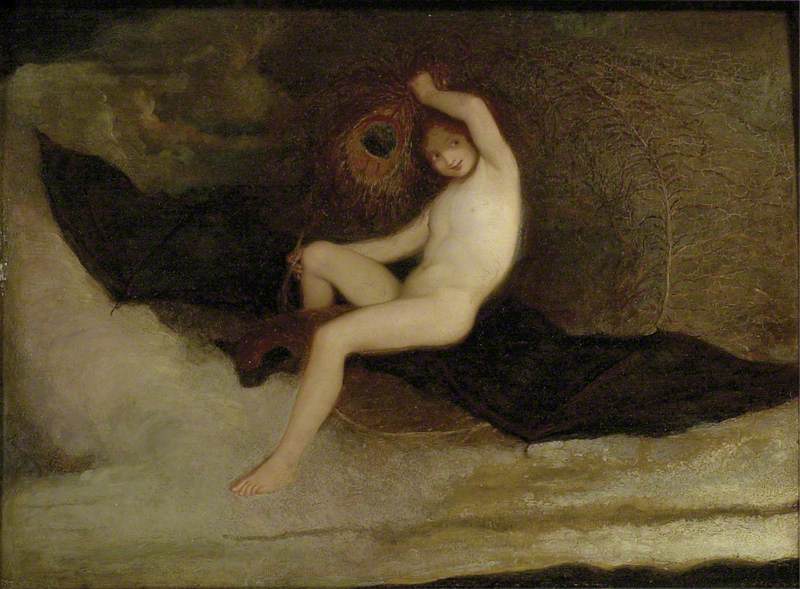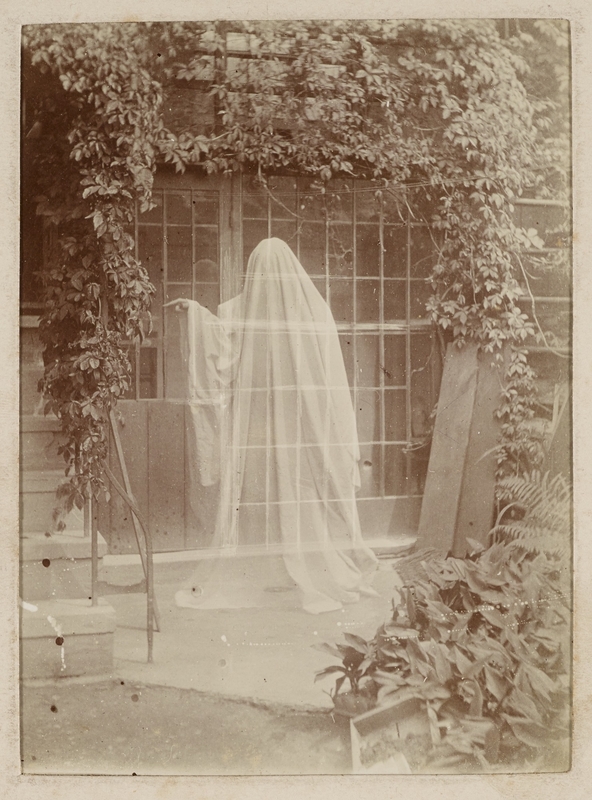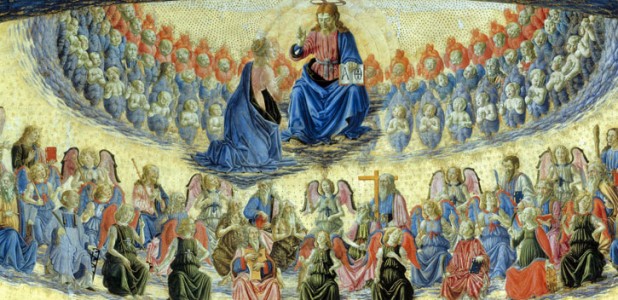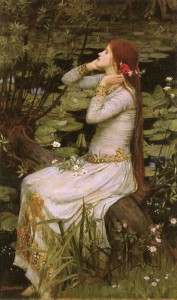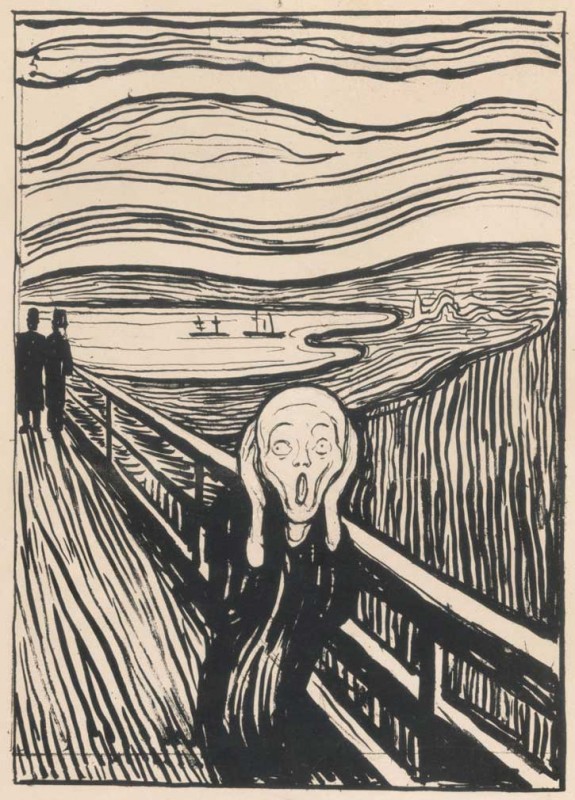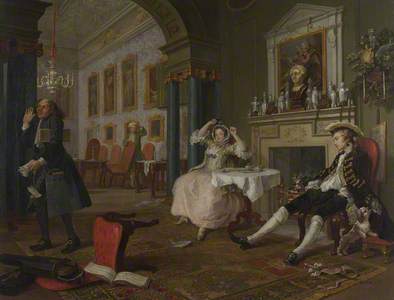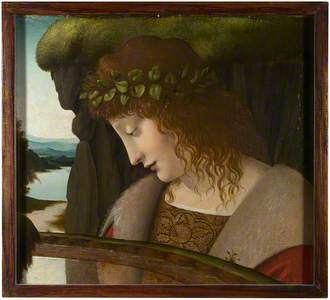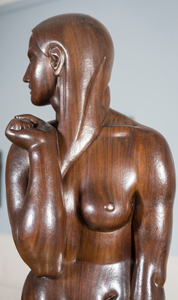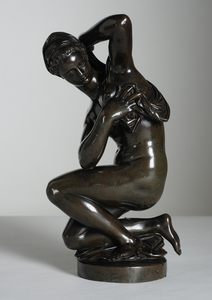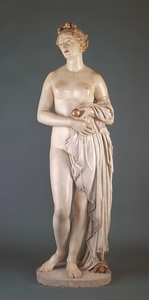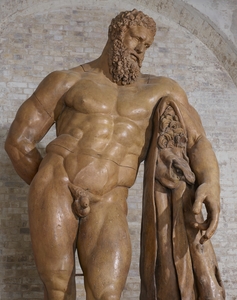The image of Adam and Eve in the Garden of Eden, caught in the decisive moment of temptation, is perhaps one of the most iconic representations of sin. One of Lucas Cranach the elder's numerous depictions of the fallen pair is currently on show as part of a special exhibition at The National Gallery, London, which brings together work by Bruegel, Titian, and Velázquez, among others. Curated by Dr Joost Joustra, 'Sin' seeks to look at 'complex theological ideas and depictions of 'sinful' everyday behaviour that blur the boundaries between religious and secular art.'
In early Christianity, a sin was considered a transgression against divine law, with individuals believing that certain behaviours would destroy the relationship between man and God. These were grouped into a set of vices – lust, gluttony, greed, sloth, pride, wrath, and envy – otherwise known as the seven 'deadly' or 'cardinal' sins. The ethical struggle between vice and virtue was fertile territory for the artistic imagination. Artists became preoccupied with portraying human fallibility in their work, but as society became more secular, these allegorical representations became less fashionable.
The Seven Deadly Sins
c.1505–1510, oil on panel by Hieronymous Bosch (c.1450–1516) 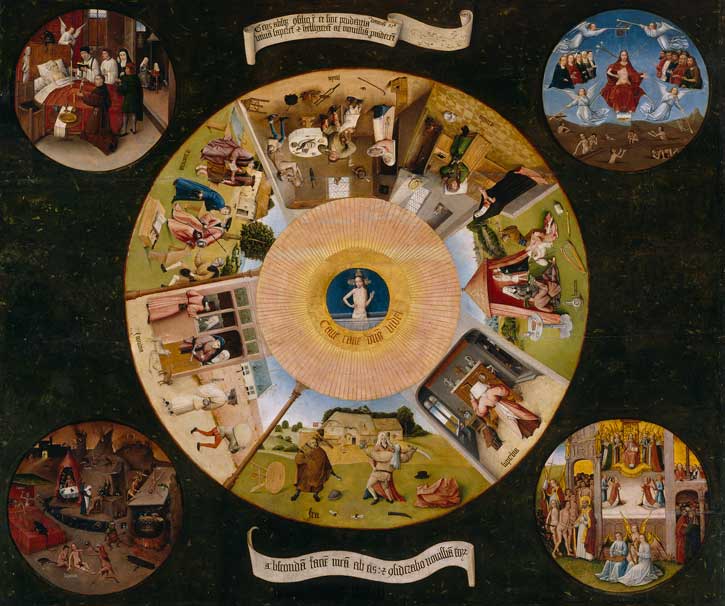
William Hogarth's The Tête à Tête painting from the 'Marriage A-la-Mode' series is included in the exhibition. After the success of his subsequent moral tales, A Harlot's Progress (1732) and A Rake's Progress (1735), 'Marriage A-la-Mode' satirised an arranged marriage. In the second painting, the newly wedded are exposed as a 'couple of convenience'.
Marriage A-la-Mode: 2, The Tête à Tête
about 1743
William Hogarth (1697–1764) 
The house is in a state of disorder, with knocked chairs and unpaid bills. The Viscount is shown exhausted, perhaps from a night spent at a brothel, due to the large black spot on his neck, a sign that he has caught syphilis. The pet dog is shown sniffing the lady's cap he has stuffed in his pocket, which is further evidence of his adultery. The Viscountess is having tea for one, representative of her own independent existence, while her slouched posture and unkempt manner is an indication of her own unfaithfulness. In addition to criticising their lustful habits, there are other symbols that pertain to additional vices, such as the broken sword from a fight (wrath) and their contentment with domestic squalor (sloth).
In Augustus Leopold Egg's 1858 depiction of female infidelity, Past and Present, No. 1, the wife is shown lying at her husband's feet: a literalisation of 'the fallen woman'. While men had mistresses in the Victoria era, adultery in women was regarded as a reprehensible crime. In the painting, the husband, holding the letter which exposes her affair, stamps on a miniature portrait of her extramarital lover. Behind the children, a house of cards is shown collapsed (fallen cards also appear in Hogarth's painting), being balanced on a book by Balzac, known for his literary depictions of adultery.
The picture on the left-hand side of the wall depicts the expulsion of Adam and Eve from the Garden of Eden: the original sin. In an extension of this Biblical tale, an apple is shown cut in two. One half is rotting on the floor (a representation of the wife) while the other half is shown with a knife stabbed into its core (representing the betrayed husband).
The second painting, Past and Present, No. 2, shows the miserable daughters orphaned in a cold garret, whereas Past and Present, No. 3, shows how the mother, now destitute, was forced to take refuge under one of the Adelphi arches.
Jan Steen's The Dissolute Household, made in the 1660s, paints a comedic picture of sinful gluttony, overconsumption, and revelry, with individuals indulging in excess food, drink, and sex. Made within the artistic tradition of Dutch moral painting, which often took a more light-hearted approach, Steen depicts the mother being pickpocketed as she falls asleep in a drunken stupor, while the master of the house engages in sexual acts at the other end of the table. While they are distracted, a fire has accidentally sparked next door, the dog is eating a platter of meat, and the maid (holding a necklace she has stolen) entertains a fiddler. The reality of an ominous fate hangs over the family's reckless heads, in the form of a wooden tub filled with symbolic objects. There is a clapper, which would have been used to give warning of contagious diseases, such as plague, while the birch branch represents justice and punishment.
Gluttony and greed were often depicted in art through Dionysus and Bacchus, the Greek and Roman gods of wine. In this licentious Bacchanalian Scene, painted by Willem van Mieris, a naked 'bacchante' (female devotee) is squeezing a bunch of grapes into a cup, while another revels in intoxicated abandonment, dancing and beating a tambourine.
Victorian artist George Cruikshank's vast, panoramic portrait The Worship of Bacchus (1860–1862) contained numerous scenes representing the ill effects of excessive drinking. The work painted society as being destroyed by its collective desire for alcohol, in the hope that British viewers might be persuaded to live a more favourable life of abstinence. Rather than excessive alcohol or food, other artists were critical of those who were greedy for possessions and hoarded their wealth.
'For he had great possessions'
1894
George Frederic Watts (1817–1904) 
The title of George Frederick Watts' 1894 painting 'For he had great possessions' was taken from the Biblical story of the rich man who approached Christ asking to become a disciple. When told that he must first sell all his worldly belongings, he refused, rejecting the spiritual path in favour of his desire for material goods.
Dutch artist Gabriel Metsu's An Old Woman Asleep (1657–1662) is a visual representation of the sin of sloth: an old woman has fallen asleep while reading the Bible. The negligence of her actions is embodied by the hungry cat at her feet, about to pounce on the plate of fish. Akin to Steen's painting of the dissolute household, Metsu approached lax moral behaviour with good humour. In the earlier painting, Two Men with a Sleeping Woman (1655–1660), a woman is shown fallen asleep drunk at a tavern. The cards and backgammon are indicators that she has been gambling, in addition to the smoking pipe, which would have been particularly frowned open, as tobacco was considered an aphrodisiac.
Metsu also represented in the sin of pride in A Woman at Her Mirror (1657–1662). The motif of a woman before a mirror, a sure symbol of their vanity, was common in Netherlandish art. In this painting, the protagonist is also holding a double-sided ivory comb, which served as a reminder of the dual nature of earthly goods, which could be used for either virtue or vice.
This notion of gazing at one's reflection is parallel to the story of Narcissus, a character from Greek mythology who fell in love with his own beautiful reflection in a pool of water. He is so entranced that he does not eat, drink, or sleep, and eventually kills himself due to the distraught caused by his unrequited passion. In Frank Cadogan Cowper's Vanity (1907), the youthful beauty observes herself in a handheld mirror. The vine of ripe grapes are a symbol of abundance and pleasure, but they were also often associated with conveying libido or desire, suggesting that she is rewarded by her own reflection.
Biblical stories were often used as a way to depict the tragic consequences of succumbing to the sin of wrath and anger. Peter Paul Rubens' emotionally charged canvases often referenced these aspects of Christian history, such as Cain Slaying Abel (1608).
Cain, a farmer, and Abel, a shepherd, were the two sons of Adam and Eve. Both made offerings of their produce to God, who preferred Abel's, as he had sacrificed his best lambs. In a jealous rage, Cain murdered his brother and was condemned to a life of restless wandering. Rubens was also inspired by tales from classical history, as with Wrath of Achilles (1630–1635), which captures the moment where Achilles draws his sword against King Agamemnon, pre-empting their imminent violent conflict.
These acts of wrath were often instigated by another sin: the emotion of envy. The story of Francesca da Rimini from Dante's epic poem 'Inferno', within the Divine Comedy (1320), was captured by numerous artists. In this 1837 painting by the Scottish artist William Dyce, he portrays the moment in which the ill-fated lovers Francesca and her brother-in-law Paolo commit adultery.
Francesca had been tricked and forced into marriage with the cruel and deformed Gianciotto da Rimini. After seeing Paolo kiss Francesca, while they were reading an account of Sir Lancelot's love for Queen Guinevere, Gianciotto surprised them, murdering both his brother and his wife. In Dyce's painting, this tragic outcome is alluded to with the presence of Gianciotto's disembodied hand, seen on the left-hand side of the frame.
In Ary Scheffer's 1835 Francesca da Rimini, Scheffer shows Dante and his guide, the Roman poet Virgil, observing the tragic couple configured in a lustful tryst, now condemned to the circle of hell. The author George Eliot said that she 'could look at it for hours'.
Philomena Epps, writer
'Sin' was at The National Gallery, London until January 2021
